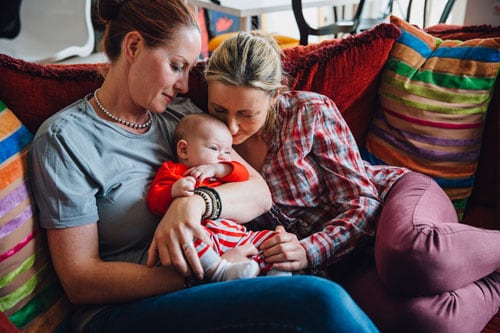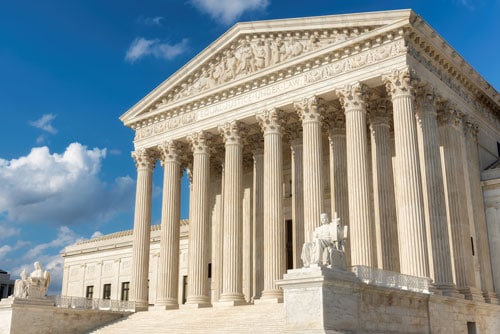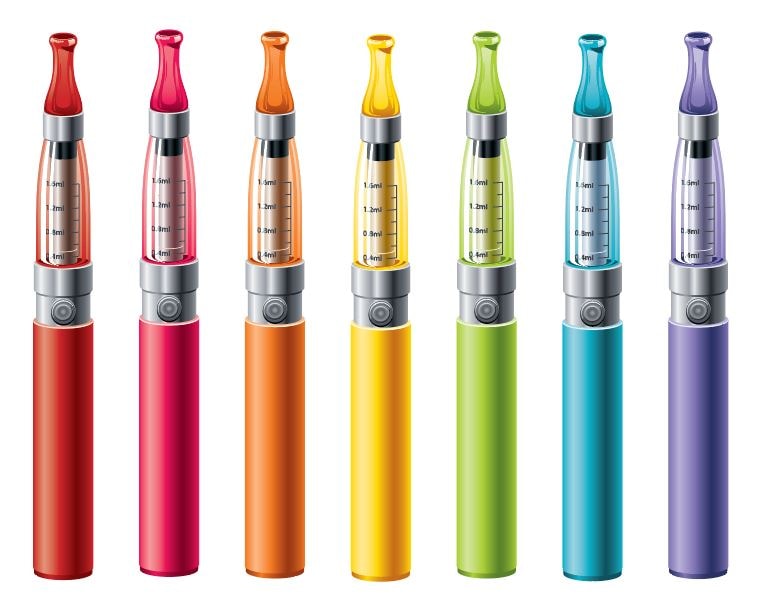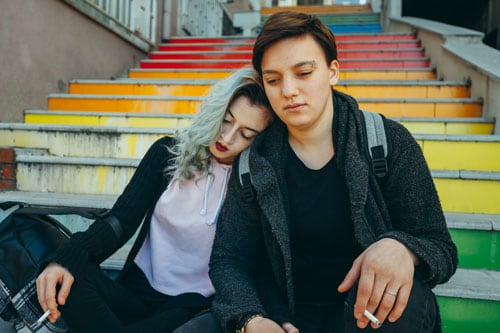Unfair and Unjust Practices Harm LGBTQ+ People and Drive Health Disparities
Sexual and gender minority groups have experienced harassment, discrimination, and been exposed to forms of violence related to unfair and unjust practices, policies, and conditions.12 Experiences of discrimination and stressful socioenvironmental conditions are associated with commercial tobacco* product and other substance use and, in turn, can contribute to poor health outcomes.11 Some examples of historical policies and practices in the United States (US) that have led to mental and physical health risks and challenges, and related long-term outcomes, for LGBTQ+ people include:

- Laws targeting LGBTQ+ people by making same-sex relationships illegal. These laws were in place from the time the nation was founded until 2003. In 1960, all fifty states had laws against same-sex sexual activity. Before the 2003 Supreme Court ruling in Lawrence v. Texas, sexual activity between people of the same sex was illegal in fourteen US states, Puerto Rico, and the U.S. military. Making same-sex relationships a crime led to unjust practices that harmed LGBTQ+ people, including discrimination in finding housing and jobs and children being removed from their parents’ care.13

- Marriage bans prevented many LGBTQ+ people from having the same rights as straight married couples, such as job protection while caring for a sick spouse and the ability to add spouses to employer-sponsored health insurance plans.14 Until the 2015 U.S. Supreme Court ruling (Obergefell vs. Hodges), states were not required to recognize marriages between same-sex couples and many states denied same-sex couples the right to marry. Marriage bans caused stigma and made same-sex couples less equal in the eyes of the law, adding to chronic stress.11
- Some LGBTQ+ people have experienced harm and distress caused by people expressing anti-LGBTQ+ views using hate crimes: threats, verbal abuse, vandalism, and violence.15,16 As of 2017, fewer than half of US states offered legal protection from discrimination based on sexual orientation.5
LGBTQ+ people have also experienced discrimination and harm from health care systems and medical science. For example:
- Organized medicine in the U.S. has often made stigma around same-sex attraction worse by using supposedly scientific reasons for this discrimination. For instance, the American Psychiatric Association’s official diagnostic book (the Diagnostic & Statistical Manual) stated that homosexuality was a mental disorder until 1973.17
- Between 1923 and 1981, the state of Oregon had people who committed “crimes against nature” (a way it described same-sex sexual activity) sterilized without their consent.18
There are also current reasons—like the ones explored below—that help explain why commercial tobacco affects the health of LGBTQ+ people.
The tobacco industry targets the LGBTQ+ community with marketing and advertising

Marketing plays a big role in whether people try or use commercial tobacco products. Being around commercial tobacco ads makes smoking appear more appealing and increases the chance that someone will try smoking for the first time or start using commercial tobacco products regularly.7,19,20,21
Tobacco companies spend billions of dollars each year to aggressively market their products. They also target specific populations, including the LGBTQ+ population, and flood them with commercial tobacco advertising.22
- Donations and sponsorships. In the early 1990s, tobacco companies were among the first large corporations to advertise in magazines and newspapers targeted at LGBTQ+ readers, sponsor Pride parades, and give donations to organizations serving LGBTQ+ people.19 Tobacco companies said in documents, not shown to the public, that these sponsorships and ads were marketing tactics designed to attract LGBTQ+ people to their products. In the 1990s, they gave one LGBT+ marketing strategy the code name “Project SCUM (Sub-Culture Urban Marketing).”22 Tobacco companies still advertise at festivals and other community events held by and for LGBTQ+ people and give to local and national groups serving LGBTQ+ people and people living with HIV.
- Targeted advertising. Tobacco companies advertise heavily in publications with gay and lesbian readership, often using images that show LGBTQ+ people using tobacco as a “normal” part of life.23
- Nightlife marketing. Bars and clubs have traditionally been one of the few spaces in which LGBTQ+ people have felt safe to meet and socialize openly.24 Tobacco companies work to promote their brands in these spaces and sponsor nightclub after-parties in bars and clubs.22

- Marketing flavored tobacco products to LGBTQ+ people using symbolism. Adding flavors (like menthol) to commercial tobacco products can mask the harshness of tobacco, promote youth initiation, lead to establishment of product use, and can contribute to lifelong tobacco use.7,25,26 Ads for flavored tobacco products have used LGBTQ+ symbolism, including phrases like “Take pride in your flavor” or images of colored packages arranged like a rainbow.27 Tobacco companies have also heavily marketed menthol cigarettes to LGBTQ+ people. This can help to explain why about 36% of LGBTQ+ people who smoke use menthol cigarettes compared to 29% of straight people who smoke.23
Public health strategies can help reduce the pressure to buy that comes with heavy advertising and discounts. To help protect LGBTQ+ people from tobacco price promotions and discourage tobacco product use, states and communities could consider increasing prices and prohibiting price discounts, prohibiting the sale of flavored tobacco products, and either allowing fewer stores in a neighborhood to sell commercial tobacco products or prohibiting tobacco product sales altogether.29
Other steps that states and communities can take include:
- Making all workplaces smokefree—with no exceptions. Many workplaces are now covered by a smokefree law—but gaps in smokefree protections often leave out bars and nightclubs. In places that do not have comprehensive smokefree laws bartenders and servers in LGBT nightclubs can be harmed by exposure to secondhand smoke.30
Stress can increase commercial tobacco use, and can make health problems worse
When people face many forms of stress—like financial problems, discrimination, or unsafe neighborhoods—they can be more likely to smoke.31,32,33 Most LGBTQ+ people say they have experienced some form of harassment or discrimination because of their sexual orientation or gender identity. More than half have had slurs used against them, and 57% report that they or a close friend have been threatened with violence.34,35
The link between discrimination, stress, and commercial tobacco helps to explain why:

- Gay college students are more likely to smoke when they have to hide their orientation.36
- Transgender people who have faced discrimination in ways that do not respect their gender identity—such as having to use IDs with the wrong gender—are more likely to smoke than transgender people who are supported in their gender identity.37
- LGBTQ+ youth who attend schools with LGBT-friendly policies and student groups are less likely to begin smoking.38
When people have severe or long-lasting stress, their bodies respond by raising stress hormones and keeping them raised. When this goes on for a long time, they may develop health problems like high blood pressure or a faster heart rate.39,40 Smoking cigarettes also leads to disease and disability and harms nearly every organ in the body.7
- Cornelius ME, Loretan CG, Wang TW, Jamal A, Homa DM. Tobacco Product Use Among Adults — United States, 2020. MMWR Morb Mortal Wkly Rep. 2022; 71:397–405 [accessed 2022 Apr 28].
- Buchting FO, Emory KT, Scout, Kim Y, Fagan P, Vera LE, & Emery S. Transgender Use of Cigarettes, Cigars, and E-Cigarettes in a National Study. Am J Preventive Med, 2017;53(1): e1–e7 [accessed 2022 Mar 1].
- Gentzke AS, Wang TW, Cornelius M, et al. Tobacco Product Use and Associated Factors Among Middle and High School Students — National Youth Tobacco Survey, United States, 2021. MMWR Surveill Summ. 2022; 71(No. SS-5):1–29 [accessed 2022 Apr 28].
- Gentzke AS, Wang TW, Jamal A, Park-Lee E, Ren C et al. Tobacco Product Use Among Middle and High School Students — United States, 2020. Morb Mortal Wkly Rep, 2020;69(50): 1881-88 [accessed 2022 Mar 1].
- Caceres BA, Brody A, Luscombe RE, Primiano JE, Marusca P et al. A Systematic Review of Cardiovascular Disease in Sexual Minorities. Am J Public Health, 2017;107(4): e13–e21 [accessed 2022 Mar 1].
- Gawlik KS, Melnyk BM, Tan A. An Epidemiological Study of Population Health Reveals Social Smoking as a Major Cardiovascular Risk Factor. Am J Health Promot. 2018;32(5):1221-1227 [accessed 2022 Mar 1].
- U.S. Department of Health and Human Services. The Health Consequences of Smoking: 50 Years of Progress. A Report of the Surgeon General. Atlanta, GA: U.S. Department of Health and Human Services, Centers for Disease Control and Prevention, National Center for Chronic Disease Prevention and Health Promotion, Office on Smoking and Health, 2014 [accessed 2022 Mar 1].
- American Cancer Society. Cancer Facts & Figures, 2020 [accessed 2022 Mar 1].
- HIV.gov U.S. Statistics. U.S. Department of Health and Human Services. Updated June 2021 [accessed 2022 Mar 1].
- Centers for Disease Control and Prevention. Estimated HIV incidence and prevalence in the United States, 2015-2019 [PDF - 2.6MB]. HIV Surveillance Supplemental Report 2021; 26(No. 1) [accessed 2022 Mar 1].
- Helleberg M, Afzal S, Kronborg G, Larsen CS, Pedersen G, et al. Mortality attributable to smoking among HIV-1-infected individuals: a nationwide, population-based cohort study. Clin Infect Dis, 2013;56(5): 727-34 [accessed 2022 Mar 1].
- McCabe SE, Hughes TL, Matthews AK, et al. Sexual Orientation Discrimination and Tobacco Use Disparities in the United States. Nicotine Tob Res. 2019;21(4):523-531 [accessed 2022 Mar 1].
- Weinmeyer, R. The decriminalization of sodomy in the United States. AMA J Ethics, 2014;16(11): 916-922 [accessed 2022 Mar 1].
- Perone AK. Health Implications of the Supreme Court's Obergefell vs. Hodges Marriage Equality Decision. LGBT Health, 2015;2(3): 196-9 [accessed 2022 Mar 1].
- Herek GM. Hate crimes and stigma-related experiences among sexual minority adults in the United States: prevalence estimates from a national probability sample. J Interpers Violence, 2009;24(1): 54-74 [accessed 2022 Mar 1].
- Bostwick WB, Boyd CJ, Hughes TL, West BT, McCabe SE. Discrimination and mental health among lesbian, gay, and bisexual adults in the United States. Am J Orthopsychiatry, 2014;84(1): 35-45 [accessed 2022 Mar 1].
- Drescher J. Out of DSM: Depathologizing Homosexuality.Behavioral Sciences, 2015;5(4): 565-575 [accessed 2022 Mar 1].
- Josefson D. Oregon's governor apologises for forced sterilisations. BMJ, 2002;325(7377): 1380 [accessed 2022 Mar 1].
- Carson NJ, Rodriguez D, Audrain-McGovern J. Investigation of mechanisms linking media exposure to smoking in high school students. Prev Med, 2005;41(2): 511-20[accessed 2022 Mar 1].
- Charlesworth A and Glantz SA. Smoking in the movies increases adolescent smoking: a review. Pediatrics, 2005;116(6): 1516-28 [accessed 2022 Mar 1].
- National Cancer Institute. The Role of the Media in Promoting and Reducing Tobacco Use. Tobacco Control Monograph No. 19. Bethesda, MD: U.S. Department of Health and Human Services, National Institutes of Health, National Cancer Institute. NIH Pub. No. 07-6242, June 2008.
- Stevens P, Carlson LM, Hinman JM. An analysis of tobacco industry marketing to lesbian, gay, bisexual and transgender (LGBT) populations: strategies for mainstream tobacco control and prevention. Health Promot Pract 2004;5(Suppl):129S–34S [accessed 2022 Mar 1].
- Smith EA, Malone RE. The Outing of Philip Morris: Advertising Tobacco to Gay Men. American Journal of Public Health. 2003;93(6):988-993. [accessed 2022 Mar 1].
- Ryan H, Wortley PM, Easton A, Pederson L, Greenwood G. Smoking among lesbians, gays, and bisexuals: a review of the literature. Am J Preventive Med, 2001;21(2):141-9 [accessed 2022 Mar 1].
- U.S. Department of Health and Human Services. Preventing Tobacco Use Among Youth and Young Adults: A Report of the Surgeon General. Atlanta, GA: U.S. Department of Health and Human Services, Centers for Disease Control and Prevention, National Center for Chronic Disease Prevention and Health Promotion, Office on Smoking and Health, 2012 [accessed 2022 Mar 1].
- U.S. Department of Health and Human Services. E-Cigarette Use Among Youth and Young Adults. A Report of the Surgeon General. Atlanta, GA: U.S. Department of Health and Human Services, Centers for Disease Control and Prevention, National Center for Chronic Disease Prevention and Health Promotion, Office on Smoking and Health, 2016 [accessed 2022 Mar 1].
- Trinkets & Trash: Artifacts of the Tobacco Epidemic. Smokeless Tobacco [PDF - 491KB]. Rutgers Center for Tobacco Studies. Rutgers University School of Public Health. [accessed 2022 Mar 1].
- Fallin A, Goodin AJ, & King BA. Menthol cigarette smoking among lesbian, gay, bisexual, and transgender adults. Am J Preventive Med, 2015 48(1): 93–97 [accessed 2022 Mar 1].
- Robertson L, McGee R, Marsh L, and Hoek J. A systematic review on the impact of point-of-sale tobacco promotion on smoking. Nic Tob Res, 2015;17(1): 2-17 [accessed 2022 Mar 1].
- Fallin A, Neilands TB, Jordan JW, Ling PM. Secondhand smoke exposure among young adult sexual minority bar and nightclub patrons. Am J Public Health. 2014;104(2):e148-e153[accessed 2022 Mar 1].
- Slopen N, Kontos EZ, Ryff CD, Ayanian JZ, Albert MA, Williams DR. Psychosocial stress and cigarette smoking persistence, cessation, and relapse over 9-10 years: a prospective study of middle-aged adults in the United States. Cancer Causes Control. 2013;24(10):1849-1863 [accessed 2022 Mar 1].
- Slopen N, Dutra LM, Williams DR, et al. Psychosocial stressors and cigarette smoking among African American adults in midlife. Nicotine Tob Res. 2012;14(10):1161-1169 [accessed 2022 Apr 28].
- Purnell JQ, Peppone LJ, Alcaraz K, et al. Perceived discrimination, psychological distress, and current smoking status: results from the Behavioral Risk Factor Surveillance System Reactions to Race module, 2004-2008. Am J Public Health. 2012;102(5):844-851 [accessed 2022 Apr 28].
- Discrimination in America: Experiences and Views of LGBTQ Americans. Robert Wood Johnson Foundation, National Public Radio, Harvard T.H. Chan School of Public Health, 2017 [accessed 2022 Mar 1].
- Parent MC, Arriaga AS, Gobble T, Wille L. Stress and substance use among sexual and gender minority individuals across the lifespan. Neurobiol Stress. 2018;10:100146. Published 2018 Dec 27. [accessed 2022 Mar 1.
- Cochran SD, Bandiera FC, Mays VM. Sexual Orientation-Related Differences in Tobacco Use and Secondhand Smoke Exposure among US Adults Aged 20-59 Years: 2003-2010 National Health and Nutrition Examination Surveys [PDF - 585KB]. Am J Public Health 2013;103(10): 1837-44 [accessed 2022 Mar 1].
- Shires DA and Jaffee KD. Structural discrimination is associated with smoking status among a national sample of transgender individuals. Nic Tob Res, 2016;18(6): 1502-08 [accessed 2022 Mar 1].
- Eisenberg ME, Erickson DJ, Gower AL, Kne L, Watson RJ, et al. Supportive community resources are associated with lower risk of substance use among lesbian, gay, bisexual, and questioning adolescents in Minnesota. J Youth Adolesc, 2020;49(4): 836-48 [accessed 2022 Mar 1].
- Juster RP, McEwen BS, & Lupien SJ. Allostatic load biomarkers of chronic stress and impact on health and cognition. Neuroscience & Biobehavioral Reviews, 2010;35(1): 2-16 [accessed 2022 Mar 1].
- Guyll M, Matthews KA, Bromberger JT. Discrimination and unfair treatment: relationship to cardiovascular reactivity among African American and European American women. Health Psychology, 2001;20(5): 315 [accessed 2022 Mar 1].
- Fallin A, Lee YO, Bennett K, Goodin A. Smoking Cessation Awareness and Utilization Among Lesbian, Gay, Bisexual, and Transgender Adults: An Analysis of the 2009-2010 National Adult Tobacco Survey. Nic Tob Res, 2015:1-5 [accessed 2022 Mar 1].
- Burns EK, Deaton EA, Levinson AH. Rates and Reasons: Disparities in Low Intentions to Use a State Smoking Cessation Quitline. Am J Health Promotion, 2011;25(sp5): S59-65 [accessed 2022 Mar 1].
- Babb S, Malarcher A, Schauer G, Asman K, Jamal A. Quitting Smoking Among Adults—United States, 2000-2015. Morbidity and Mortality Weekly Report 2017;65(52):1457-64 [accessed 2022 Mar 1].
- James, S. E., Herman, J. L., Rankin, S., Keisling, M., Mottet, L., & Anafi, M. (2016). Executive Summary of the Report of the 2015 U.S. Transgender Survey [PDF - 205KB]. Washington, DC: National Center for Transgender Equality. [accessed 2022 Mar 1].
- Boynton MH, Gilbert J, Shook-Sa BE, Lee JGL. Perceived Importance of Health Concerns Among Lesbian, Gay, Bisexual, and Transgender Adults in a National, Probability-Based Phone Survey, 2017. Health Promotion Practice, 2020 [accessed 2022 Mar 1].
- DiGiulio A, Jump Z, Babb S, et al. State Medicaid Coverage for Tobacco Cessation Treatments and Barriers to Accessing Treatments — United States, 2008–2018. MMWR Morb Mortal Wkly Rep 2020;69:155–160 [accessed 2022 Mar 1].
- Lee JG, Matthews AK, McCullen CA, & Melvin CL. Promotion of tobacco use cessation for lesbian, gay, bisexual, and transgender people: a systematic review. Am J Preventive Med, 2014;47(6): 823-31 [accessed 2022 Mar 1].
- Matthews PA, Blok AC, Lee J, Hitsman B, Sanchez-Johnsen L, et al. SBM recommends policy support to reduce smoking disparities for sexual and gender minorities. Translational Behavioral Medicine, 2018;8(5): 692–695 [accessed 2022 Mar 1].
- U.S. Department of Health and Human Services. Smoking Cessation: A Report of the Surgeon General [PDF - 9.8MB]. Centers for Disease Control and Prevention, 2020 [accessed 2022 Mar 1].


